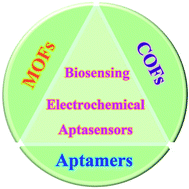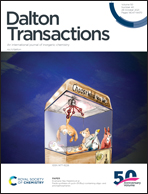Recent advances in metal/covalent organic framework-based electrochemical aptasensors for biosensing applications
Abstract
The booming development of novel porous materials, metal–organic frameworks (MOFs) and covalent–organic frameworks (COFs) has been attracting a lot of attention due to their designabilities, diversities, and extensive applications. MOFs and COFs provide a new potential opportunity and platform to fabricate electrochemical aptasensors for biosensing applications. Compared to other traditional materials, MOF/COF-based electrochemical biosensors can appreciably amplify the electrochemical response signals to improve the sensing performance. Herein, we provide a comprehensive overview of MOF/COF-based electrochemical aptasensors for monitoring different ultra-trace analytes (e.g. antibiotics, pesticides, and cancer markers). This review systematically discusses the classification of electrochemical aptasensors based on various functional materials, including pure MOFs, MOF/conductive composites, metal nanoparticle/MOF composites, pure COFs, COFs/conductive composites, and other hybrid materials. Furthermore, some typical MOF/COF-based electrochemical aptasensors in the recognition of specific targets are described in detail to improve and guide further research for biosensing applications.

- This article is part of the themed collection: 2021 Frontier and Perspective articles


 Please wait while we load your content...
Please wait while we load your content...